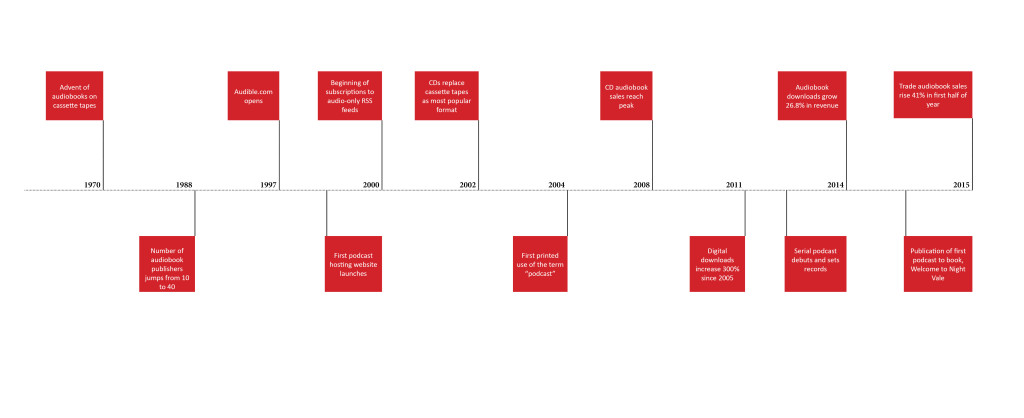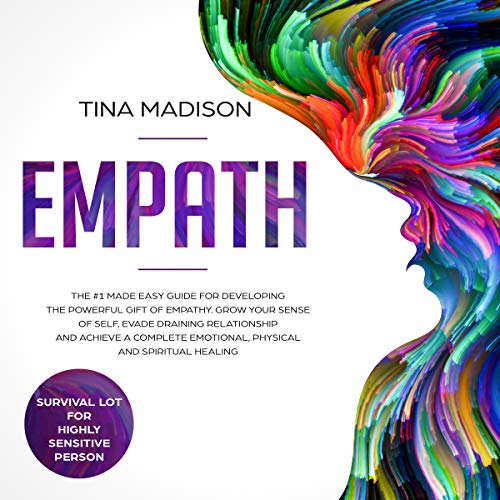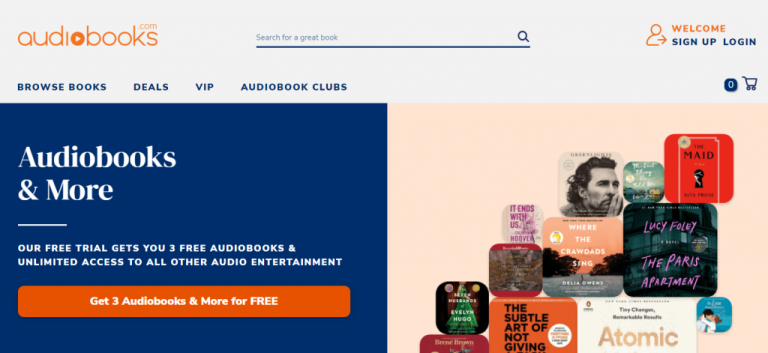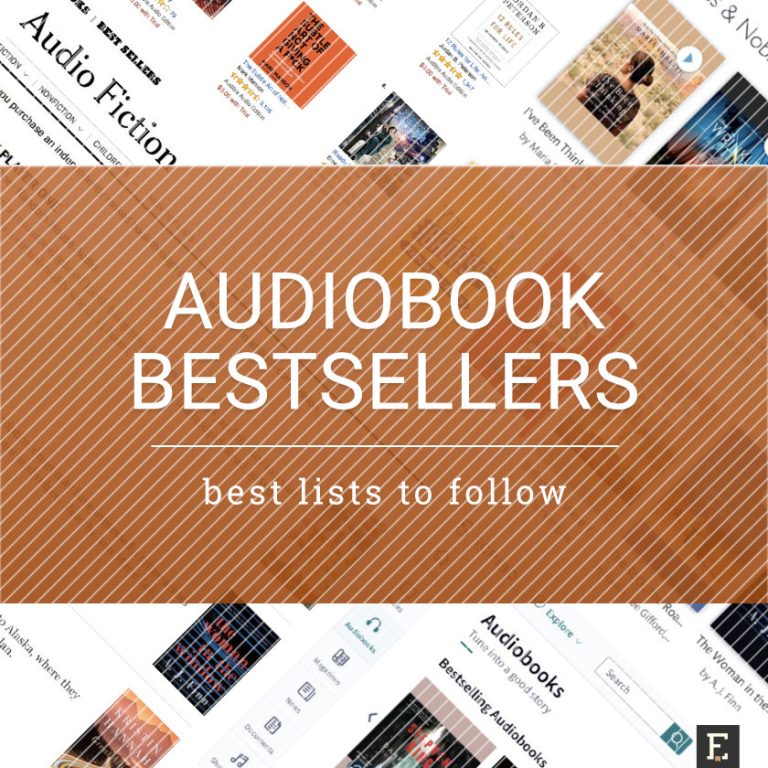The Evolution Of Best Selling Audiobooks: From Cassettes To Digital
From the days of bulky cassettes to the era of digital downloads, the world of audiobooks has experienced a remarkable evolution. It’s fascinating to witness how this once niche market has now become a booming industry, captivating the hearts and minds of millions of listeners worldwide. In this article, we’ll delve into the captivating journey of best-selling audiobooks, exploring the transition from cassettes to digital formats, and how this transformation has revolutionized the way we consume literature.
Picture this: it’s the 1990s, and you’re driving down the highway with your trusty Walkman, popping in a cassette tape of your favorite novel. The crackling sound, the slight distortion, and the occasional rewind mishap all added to the charm of listening to books on tape. Fast forward to the present day, and we find ourselves in the digital age, where audiobooks can be accessed with just a few taps on our smartphones. The convenience and accessibility of digital platforms have undoubtedly revolutionized the audiobook industry, making it easier than ever to immerse ourselves in captivating stories, whether we’re on a long commute or simply relaxing at home.
With the advent of digital audiobooks, the possibilities are endless. Engaging narrators bring characters to life, sound effects create immersive experiences, and the ability to listen at any time and any place has opened up a world of literary exploration. The evolution of best-selling audiobooks from cassettes to digital formats has not only made literature more accessible but has also sparked a newfound appreciation for the art of storytelling. So, let’s embark on this journey together, as we explore the fascinating transformation that has shaped the way we enjoy our favorite novels.
Audiobooks have come a long way from their humble beginnings on cassette tapes to the convenience of digital formats. The evolution of best-selling audiobooks has revolutionized the way we consume literature. With the rise of smartphones and streaming platforms, listeners now have access to a vast library of titles at their fingertips.
The transition from cassettes to digital has not only made audiobooks more accessible but also enhanced the overall listening experience. Digital formats allow for easy navigation, bookmarking, and customization options, making it easier for users to immerse themselves in the story.
Additionally, advancements in technology have led to the inclusion of high-quality narrations, sound effects, and even celebrity voices in audiobooks. These elements further engage listeners and bring the stories to life in ways that traditional print books cannot.
As the demand for audiobooks continues to grow, it’s clear that the evolution from cassettes to digital has played a significant role in their success. With the convenience and immersive experience they offer, it’s no wonder that best-selling audiobooks have become a popular choice for book lovers worldwide.

The Evolution of Best Selling Audiobooks: From Cassettes to Digital
Audiobooks have come a long way since their humble beginnings on cassette tapes. With the rapid advancement of technology, the way we consume and access audiobooks has undergone a significant transformation. From the nostalgic days of inserting a cassette tape into a Walkman to the convenience of downloading a digital audiobook onto our smartphones, the evolution of best-selling audiobooks has revolutionized the way we enjoy literature.
The Rise of Audiobooks
In the early days, audiobooks were primarily enjoyed by visually impaired individuals who found solace in the spoken word. However, as technology progressed and the demand for convenience grew, audiobooks started gaining popularity among the general public. The ability to listen to a book while commuting, exercising, or even doing household chores appealed to busy individuals who craved the joy of reading but struggled to find the time.
As the demand for audiobooks increased, so did the variety and availability of titles. Publishers recognized the potential of this emerging market and began producing audiobooks alongside their print counterparts. This shift expanded the audiobook industry and made it more accessible to a wider audience.
The Era of Cassettes
The first commercially available audiobooks were released on cassette tapes. These physical copies required a cassette player to listen to the content. While cassettes provided a convenient way to enjoy audiobooks, they also came with their limitations. Users had to manually fast forward or rewind to find specific sections, and the bulkiness of cassettes made it challenging to carry multiple titles at once. Despite these drawbacks, cassette tapes paved the way for the future of audiobooks and set the stage for further advancements.
The Digital Revolution
The advent of digital technology marked a significant turning point in the audiobook industry. With the rise of CDs and MP3 players, audiobooks became more compact and portable. CDs offered better sound quality and the ability to skip tracks, making the listening experience more seamless. However, it was the introduction of digital audiobooks that truly revolutionized the industry.
Digital audiobooks eliminated the need for physical copies altogether. With the rise of online platforms and digital marketplaces, users could easily download their favorite titles onto their devices. This newfound convenience allowed for instant access to a vast library of audiobooks. Whether it was through dedicated audiobook apps or online retailers, listeners could now enjoy their favorite stories with just a few taps.
The Benefits of Digital Audiobooks
The transition from cassettes to digital audiobooks brought about numerous benefits that have contributed to their widespread popularity. One of the most significant advantages is the increased accessibility. Digital audiobooks can be downloaded onto various devices, such as smartphones, tablets, and e-readers, giving users the freedom to listen to their favorite titles wherever and whenever they please.
Moreover, digital audiobooks offer enhanced functionality that was not possible with physical copies. With the ability to bookmark, highlight, and search for specific passages, listeners can easily navigate through the content and personalize their reading experience. Additionally, digital platforms often provide features like adjustable playback speed, allowing users to control the pace at which they consume the book.
The Rise of Audiobook Subscription Services
As the popularity of digital audiobooks soared, subscription services emerged as a convenient and cost-effective way to access a vast library of titles. Platforms like Audible, Scribd, and Libro.fm offer monthly subscriptions that grant users unlimited access to a vast selection of audiobooks. This subscription model allows avid readers to indulge in their passion without breaking the bank. Additionally, these services often provide exclusive content, author interviews, and personalized recommendations, enhancing the overall listening experience.
The Future of Audiobooks
The evolution of best-selling audiobooks shows no signs of slowing down. As technology continues to advance, we can expect further innovations that will enhance the listening experience. Voice-controlled devices, such as smart speakers, are becoming increasingly popular, and integrating audiobook functionalities into these devices is the next logical step. Furthermore, advancements in artificial intelligence may lead to more immersive and interactive audiobook experiences, blurring the line between traditional reading and audio storytelling.
In conclusion, the evolution of best-selling audiobooks from cassettes to digital has revolutionized the way we consume literature. The convenience, accessibility, and enhanced functionality offered by digital audiobooks have made them a preferred choice for readers around the world. With the rise of subscription services and the continuous advancement of technology, the future of audiobooks looks bright, promising an even more engaging and immersive listening experience. So, grab your headphones and dive into the fascinating world of audiobooks!
The Evolution of Best Selling Audiobooks: From Cassettes to Digital
- Audiobooks have come a long way, from being available only on cassettes to being accessible in digital formats.
- The shift to digital audiobooks has made them more convenient and accessible for people of all ages.
- With the advancements in technology, audiobooks can now be easily downloaded and enjoyed on various devices.
- The popularity of audiobooks has grown significantly due to their convenience for multitasking and on-the-go listening.
- From classic novels to self-help books, there is a wide range of best-selling audiobooks available in digital formats.
Frequently Asked Questions
1. How did audiobooks evolve from cassettes to digital formats?
In the early days of audiobooks, cassettes were the primary format used. Listeners would purchase or rent cassette tapes and play them on cassette players. However, with the advancement of technology, the digital revolution brought about significant changes in the audiobook industry. The evolution from cassettes to digital formats began with the introduction of CDs, which offered better audio quality and convenience. CDs quickly gained popularity and became the preferred format for audiobooks.
As technology continued to progress, the rise of the internet and digital media paved the way for the next phase of audiobook evolution. With the advent of digital platforms and devices such as MP3 players and smartphones, audiobooks started to be distributed in digital formats. This shift allowed users to download and listen to audiobooks anytime, anywhere, without the need for physical media. Today, the majority of audiobooks are consumed in digital formats, with streaming services and online platforms offering a wide range of options for listeners.
2. What are the advantages of digital audiobooks over cassettes?
Digital audiobooks offer several advantages over cassettes. Firstly, convenience is a key factor. With digital formats, listeners can access their audiobooks instantly, without the need to carry around physical tapes or CDs. Digital audiobooks can be downloaded or streamed directly to various devices, such as smartphones, tablets, or e-readers, making them easily accessible on the go.
Another advantage is the storage capacity. While cassettes had limitations in terms of the number of books that could be stored, digital formats allow for a virtually unlimited library of audiobooks. Users can store multiple titles on a single device, eliminating the need for physical storage space.
3. How has the availability of audiobooks changed with the transition to digital?
The transition to digital formats has significantly increased the availability of audiobooks. In the past, finding a specific audiobook on cassette could be challenging, as it relied on physical distribution and availability in local stores or libraries. With digital platforms, there is a vast selection of audiobooks readily accessible at the touch of a button.
Furthermore, the rise of digital self-publishing and audiobook production has allowed more authors and publishers to release their works in audio format. This has led to a broader range of audiobooks across different genres, ensuring that there is something for everyone’s taste. Additionally, online platforms and subscription services have made it easier for listeners to explore new titles and discover lesser-known authors or niche genres.
4. Are there any challenges associated with the transition to digital audiobooks?
While the transition to digital audiobooks has brought numerous benefits, there are also some challenges to consider. One of the main concerns is the potential loss of the tactile experience. Cassettes and CDs allowed listeners to physically handle and collect audiobooks, creating a tangible connection to the content. With digital formats, this physical aspect is lost, and some individuals may miss the nostalgic feel of owning a physical copy.
Another challenge is the reliance on technology and internet connectivity. Digital audiobooks require devices and a stable internet connection to access and stream or download the content. In areas with limited or unreliable internet access, this can pose difficulties for listeners who rely solely on digital formats. Additionally, technological advancements may lead to compatibility issues, as older devices or software may not support the latest digital audiobook formats.
5. What does the future hold for audiobook formats?
The future of audiobook formats is likely to continue evolving with advancements in technology. While digital formats currently dominate the market, new innovations may emerge, providing even more immersive and interactive experiences for listeners. Virtual reality (VR) and augmented reality (AR) technologies have the potential to enhance audiobook narration by adding visual and interactive elements.
Furthermore, voice-controlled devices such as smart speakers and virtual assistants are becoming increasingly popular. This opens up possibilities for new ways of consuming audiobooks, with voice commands and personalized recommendations. As technology progresses, the audiobook industry will undoubtedly adapt to meet the changing preferences and demands of listeners, offering innovative formats and features.
The Psychology Of Selling By Brian Tracy
Final Summary: The Journey of Audiobooks, From Cassettes to Digital
As we wrap up our exploration of the evolution of best-selling audiobooks from cassettes to digital, it’s clear that this industry has come a long way. From the humble beginnings of cassette tapes, where listeners had to physically insert and rewind tapes, to the convenience of digital formats that can be accessed with just a few taps on a screen, audiobooks have transformed the way we consume literature.
With the rise of digital technology, the audiobook industry has experienced a remarkable surge in popularity. The availability of audiobooks through online platforms and apps has opened up new avenues for readers to enjoy their favorite stories. No longer constrained by physical copies, listeners can now access a vast library of titles with just a few clicks, making it easier than ever to indulge in a good book while on the go.
This digital revolution has not only made audiobooks more accessible but has also enhanced the overall listening experience. With features such as variable playback speed, bookmarking, and syncing across devices, listeners now have more control and flexibility in how they engage with their favorite books. Whether you’re commuting, exercising, or simply relaxing at home, audiobooks offer a convenient and immersive way to enjoy literature.
In conclusion, as technology continues to advance and shape our lives, the world of audiobooks will undoubtedly continue to evolve. From cassettes to digital formats, this journey has revolutionized the way we engage with literature, making it more accessible and enjoyable for people around the world. So, grab your headphones, find your favorite title, and let the captivating world of audiobooks transport you to new realms of imagination and storytelling. Happy listening!





